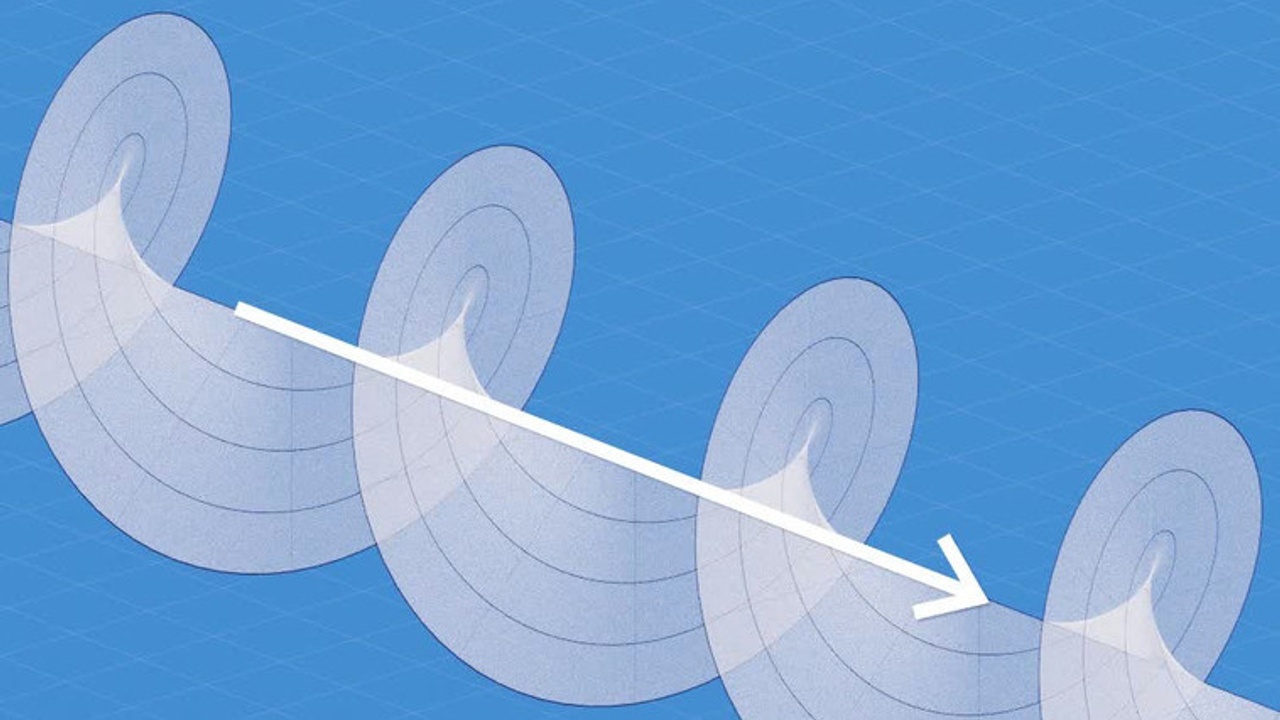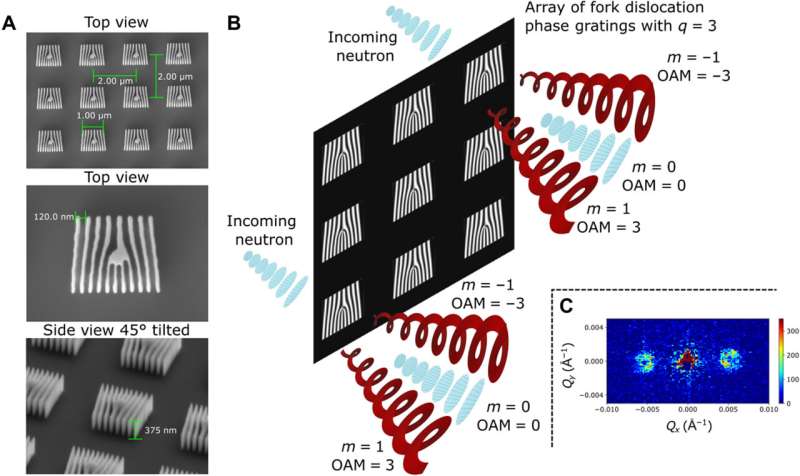Neutron Helical Waves

CREDIT: SEAN KELLEY/NIST
By Amal Pushp, Affiliate Physicist at the Resonance Science Foundation
Neutrons form a major component of baryonic matter. Except for hydrogen, neutrons are present in the central region (nucleus) of the atoms of all elements. Although they are electrically neutral, they are very crucial for the determination of atomic structure and its composition. One of the key reasons why they are influential is due to the fact that they can penetrate materials that optical radiations like X-rays usually cannot.
The de Broglie hypothesis of quantum theory tells us that elementary particles can possess dual characteristics, wave and particle, depending on the situation. Just like the electrons, the wave characteristics of neutrons can also be employed to study materials and one of the major advantages in this regard is that the wavelength can be turned extremely small which in turn results in a high-resolution image of the sample under study. This characteristic is commonly employed in neutron diffraction techniques.
The laws of quantum mechanics also tell us that elementary particles like electrons, protons, etc possess two kinds of momenta, these are due to the orbital motion and spin motion. The former is called the orbital angular momentum (OAM) and the latter is referred to as the spin angular momentum (SAM). Their sum is collectively known as the spin-orbit coupling. Neutrons also have an intrinsic OAM and this has been employed recently in the creation of a novel quantum device which was then used to uncover an aspect of the neutron’s OAM which was not known previously.
The research group based at the Institute for Quantum Computing (IQC), Waterloo in an unprecedented experimental scenario has observed that when neutrons traverse from the newly created device, they display a donut or torus-like structure [1]. This observation suggests that neutrons can possess quantized OAM and propagate in a helical manner.
Neutrons express the property of spin polarization. This in combination with the observation of quantized OAM for neutrons have very interesting applications. Some of the areas where this would be handy are in the investigation of quantum materials, quantum computing and in working out important problems in fundamental theoretical physics.

Holographic approach to generating neutron helical wavefronts that carry well-defined OAM. (A) SEM images characterizing the array of fork dislocation phase gratings used to generate the neutron helical wavefronts. The arrays covered an area of 0.5 cm by 0.5 cm and consisted of 6,250,000 individual 1 μm–by–1 μm fork dislocation phase gratings that had a period of 120 nm, had a height of 500 nm, and were separated by 1 μm on each side. Three arrays with topological charges of q = 0 (standard grating profile), q = 3 (shown here), and q = 7 were used in the experiment. (B) Each phase grating generates a diffraction spectrum consisting of diffraction orders (m) that carry a well-defined OAM value of ℓ = mħq. (C) Intensity in the far field is the sum over the signal from all of the individual fork dislocation phase gratings. Shown is an example of the collected small-angle neutron scattering (SANS) data. Credit: Science Advances (2022)
RSF in Perspective:
Physicist Nassim Haramein has been propounding for decades that all the particles in the universe are characterized by spin motion and the origin of this spin is inherent in the field governing the dynamics of the respective particles. In his previous publications, he has shown that by incorporating torque and Coriolis forces into the Einstein field equations, a new solution is achieved which tells us that spacetime is itself curling at all scales and which in turn is the source of all spin dynamics in the universe [2]. There are several consequences of this realization, one of them being the existence of rotational property for all black holes.
Now many other physicists around the world are realizing the importance of spin, like the discovery of neutron helical waves described in this article, it is explicit that predictions of Nassim’s theories are proving to be true. Furthermore, given that now there are numerous evidences in favour of Nassim’s work, it is expected that once the new paper is out, all these ideas would be woven coherently into an overarching framework.
References:
[1] Dusan Sarenac et al, Experimental realization of neutron helical waves, Science Advances (2022). DOI: 10.1126/sciadv.add2002
[2] Haramein, N., and Rauscher, E. A. (2005). The origin of spin: A consideration of torque and Coriolis forces in Einstein’s field equations and grand unification theory. Beyond The Standard Model: Searching for Unity in Physics, 1, 153-168.



